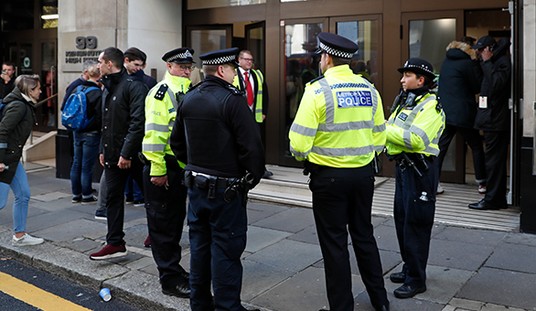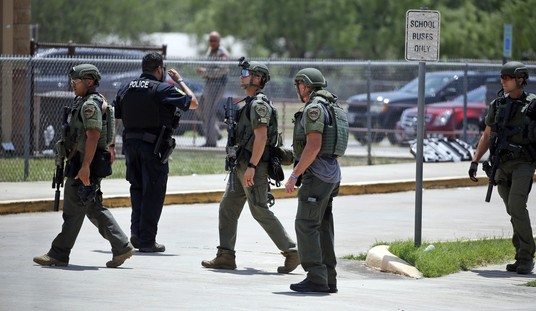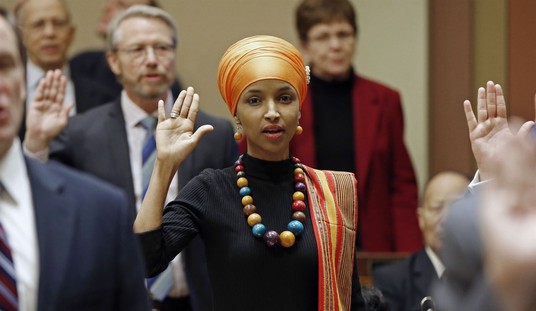Today’s economic numbers are a decidedly mixed bag, but don’t tell the Associated Press. On one hand, the October durable-goods report shows a 2% decline across the board, the first overall decline in three months. Even without the volatile transportation sector, orders dropped slightly:
New Orders. New orders for manufactured durable goods in October decreased $4.6 billion or 2.0 percent to $230.3 billion, the U.S. Census Bureau announced today. This decrease, down following two consecutive monthly increases, followed a 4.1 percent September increase. Excluding transportation, new orders decreased 0.1 percent. Excluding defense, new orders decreased 1.3 percent. Transportation equipment, also down following two consecutive monthly increases, led the decrease, $4.6 billion or 5.9 percent to $73.0 billion. This was led by nondefense aircraft and parts, which decreased $3.0 billion.
That’s a poor start to the fourth quarter, but the news may be worse in the next couple of months. Capital investment dropped by almost four percent, although this was led by the defense industry:
Capital Goods. Nondefense new orders for capital goods in October decreased $3.2 billion or 3.9 percent to $77.9 billion. Shipments increased slightly to $74.2 billion. Unfilled orders increased $3.7 billion or 0.6 percent to $620.8 billion. Inventories increased $1.0 billion or 0.6 percent to $174.2 billion. Defense new orders for capital goods in October decreased $1.7 billion or 16.3 percent to $8.7 billion. Shipments decreased $0.2 billion or 2.4 percent to $9.8 billion. Unfilled orders decreased $1.0 billion or 0.6 percent to $167.1 billion. Inventories decreased slightly or 0.2 percent to $23.0 billion.
The slide in defense spending is in part from the sequestration and probably includes a little impact from the shutdown. Even so, about half of the decline comes from outside the defense sector, and it hints that companies aren’t terribly encouraged to invest in infrastructure at the moment, which bodes ill for expansion and job creation in the short run.
Reuters notes the “unexpected” decline in confidence:
The Commerce Department said on Wednesday non-defense capital goods orders excluding aircraft, a closely watched proxy for business spending plans, dropped 1.2 percent last month. It was the second month of declines after orders for these so-called core capital goods fell 1.4 percent in September.
Economists polled by Reuters had expected this category to increase 0.6 percent.
The unexpected drop in these orders suggested some ebbing in the manufacturing sector’s recently found strength. It could also be an indication that a 16-day partial government shutdown last month hurt business confidence.
It’s not just businesses expressing a lack of confidence, either:
U.S. consumers’ confidence in the economy fell in November to the lowest level in seven months, dragged down by greater concerns about hiring and pay in the coming months.
The Conference Board said Tuesday that its index of consumer confidence dropped to 70.4 from 72.4 in October. The October reading was higher than initially reported, but still well below the 80.2 reading in September.
Confidence plunged in October on worries about the shutdown. The November decline, however, was mostly due to concerns about the next six months.
On the other hand, we have the weekly jobless claims report from the Department of Labor, which had a small incremental decline … maybe:
In the week ending November 23, the advance figure for seasonally adjusted initial claims was 316,000, a decrease of 10,000 from the previous week’s revised figure of 326,000. The 4-week moving average was 331,750, a decrease of 7,500 from the previous week’s revised average of 339,250.
The advance seasonally adjusted insured unemployment rate was 2.1 percent for the week ending November 16, a decrease of 0.1 percentage point from the prior week’s unrevised rate. The advance number for seasonally adjusted insured unemployment during the week ending November 16 was 2,776,000, a decrease of 91,000 from the preceding week’s revised level of 2,867,000. The 4-week moving average was 2,831,750, a decrease of 22,750 from the preceding week’s revised average of 2,854,500.
This may end up getting revised a little more significantly after the holidays. Normally the DoL generates this report on Thursdays, but tomorrow is a holiday, and that compressed the estimate time for the states. It doesn’t appear any data is missing, but don’t expect the number to remain static — and the degree of change is statistically insignificant anyway.
That didn’t stop the AP from issuing this sunny — and oddly dated — report:
A government spokesman said there were no special factors that drove claims lower but cautioned that it can be difficult to seasonally adjust in late November because the Thanksgiving holiday occurs at different times each year. This year Thanksgiving is a week later than last year.
Still, the broader trend has been encouraging. As layoffs have dwindled, hiring has picked up. Employers added 204,000 jobs last month, indicating that companies were undeterred by the 16-day government shutdown. Private businesses added 212,000 new positions, the most since February.
“If claims can trend at anything like this level through the inevitable noise of Thanksgiving and then the holiday season, that would mark a real improvement on the pre-shutdown period and would be consistent with stronger payroll growth,” said Ian Shepherdson, chief economist for Pantheon Macroeconomics, in a client note.
Well, it’s true that the economy added 204,000 jobs in October, but that was news three weeks ago. It is equally true that 720,000 people left the workforce in October, and that the civilian workforce participation rate dropped to 62.8%, the lowest it has been since March 1978, nearly 36 years ago. It’s also more than three percentage points lower than it was at the start of the technical recovery in June 2009, when it was 65.7%. None of that suggests that “the broader trend has been encouraging,” especially since it takes 150,000 jobs added net each month just to keep up with population growth.








Join the conversation as a VIP Member